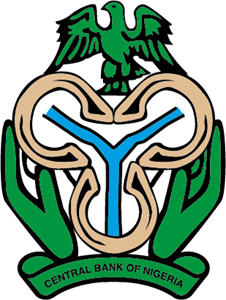By Bassey Udo
The buck passing over the subsisting epileptic supply of electricity nationwide continued on Sunday as the generaring cimpanies (GENCOs) pushed back forcefully against the narrative suggesting they may be blamed over the situation.
Electricity consumers across the country have in recent times been
The Transmission Company of Nigeria (TCN), which handles the transmission of electricity to the national grid for the final distribution to the consumers, washed their hands off the problem, blaming it on “the very low power generation by the GENCOs, making it difficult for the TCN to wheel enough electricity through the national transmission grid to the power distribution companies (DISCos) nationwide.”
“The TCN can only transmit the quantum of power generated by GENCOs through the national grid to distribution load centres nationwide,” TCN spokesperson, Ndidi Mbah, said in a statement last Tuesday in Abuja.
But the GENCOs vehemently denied the blame, saying the responsibility for the current poor electricity supply should not be put on anybody than the Federal Government, through its agency, the Nigerian Bulk Electricity Trading (NBET).
The GENCOs, through their umbrella group, the Association of Power Generation Companies (APGC) traced the deplorable situation to the non-payment by NBET for unutilized electricity generated valued at over N1.6 trillion.
The Executive Secretary of APGC, Joy Ogaji, told reporters in Abuja on Sunday that the cumulative non-payment culminated in huge illiquidity, coupled with non-availability of foreign exchange (FX), that has resulted in the incapacitation of GENCOs to deliver on their mandate.
Ogaji said the blame for the low generation and load shedding should rightly be on poor maintenance and inefficient management of the national grid by the TCN.
Inefficient grid managing affecting GenCos, causing outage – APGC
“The GENCos are supposed to start and stop their turbines at most 20 times a year. But in Nigeria, they start and stop 365 days every year. This wear and tear is affecting the plants, which causes maintenance issues at a time when they should be operating optimally,” Ogaji said.
She said the market is supposed to experience low and high seasons, such that thermal power plants were supposed to be performing optimally when the hydro power plants were undergoing routine maintenance, so that the impact would not be felt much.
However Ogaji pointed out that the design cannot work now, because of the poor management of the national grid and the non-settlement of debts by NBET for GENCOs to have enough funding to carry out routine maintenance.
“Prior to the taking over of the electricity payments in 2015 by NBET, the Market Operator used to pay GENCos for capacity charge and energy charge based on the privatization contract. But since 2015, NBET has illegally stopped that arrangement. Currently, the unpaid available capacity charge owed by NBET is abouy N1.644.15 trillion,” Ogaji said.
The breakdown of the outstanding indebtedness showed that every year, about half of the available electricity generation capacity of the GENCos are not paid for, as the national grid has no capacity to take all the energy, transmit and distribute to consumers.
In 2015, Ogaji said GENCos generated over 6,661MW capacity, but only 3,606MW was taken by the national grid, leaving over 3,010MW stranded, causing a N214.9bn shortfall.
In 2016, she said 3,828MW electricity generated was stranded, resulting in about N273.9bn debt, while another 236.4bn debt accumulated due to 3,312MW stranded power in 2017.
Also, in 2018, she said stranded power rose to 3,699MW valued at about N264bn, and N256.9bn in 2019 for 3,599MW unutilized electricity.
As at 2020, the APGC Executive Secretary said GENCos could not earn N266bn due to 3,742MW stranded power, while N120bn was the debt for 2021, as a result of generating 6,336MW and having 2,246MW left stranded by the national grid inefficiency.
“Most of the electricity generated in Nigeria, about 80 percent, come from gas-fired turbines. Natural gas is the feedstock or fuel of these plants. GENCos have consistently been dealing with unending gas-related challenges, which inhibit optimal generation.
“Issues of gas volume, gas quality, gas pressure and gas transportation have consistently curtailed capacity utilization by GENCos, thereby affecting power generation. These issues need to be addressed and urgently too, as the GENCos have always requested.
“Unfortunately, the unenforceable state of the contracts in the NESI and the broken cycle of payment assurance has made the enforcement of what would ordinarily be basic obligations of parties to the industry agreements, impossible”, she said.
To resolve the problem, Ogaji said the GENCOs would want to have a sit down with the government as a matter of urgency, to look at these line items, and let NBET bring their books for reconciliation, if a sustainable electricity market is to be achieved.
Regardless, NBET disputed the figures quoted by the GENCos, pointing out that only companies with active gas supply and transportation contracts were being paid for unutilized electricity generation capacity.
The spokesperson of NBET, Henrietta Ighomrore, as at the moment, only five power generation companies with active gas sales/purchase agreement were being paid for unused available capacity.
Ighomrore said Ogaji’s claim that the GENCOs have the capacity to generate 9,000MW of electricity was not accurate, as inspections conducted by NBET revealed such capacity does not exist.
“The situation in the Power Sector right now is not one for name calling, or blame game, neither is it one for fictitious data reporting. As you are well aware, the Federal Government via NBET has continued to deploy innovative solutions aimed at sustaining sufficient cash flow within the Power Sector, especially payments to the GENCos to ensure they meet their immediate obligations and continue to meet and ramp up generation to the national grid.
The spokesperson insisted NBET has been making payments to GENCOs as and when due, and has never defaulted on any payment cycle till date.
The percentage payment made to GENCOs, she said, has continually been on the increase, with the N701.9billion payment, which ensured a minimum of 80 percent of GENCOs’ invoices for year 2018 and 2019, as well as the second tranche of N600 billion that ensured an average of 95 percent payment of GENCOs’ invoices for 2020.
Also, she said with the current payment programme that caters for tariffs shortfall, GENCOs have continued to receive over 90 percent payment of their generating invoices for the 2021 payment cycle.




